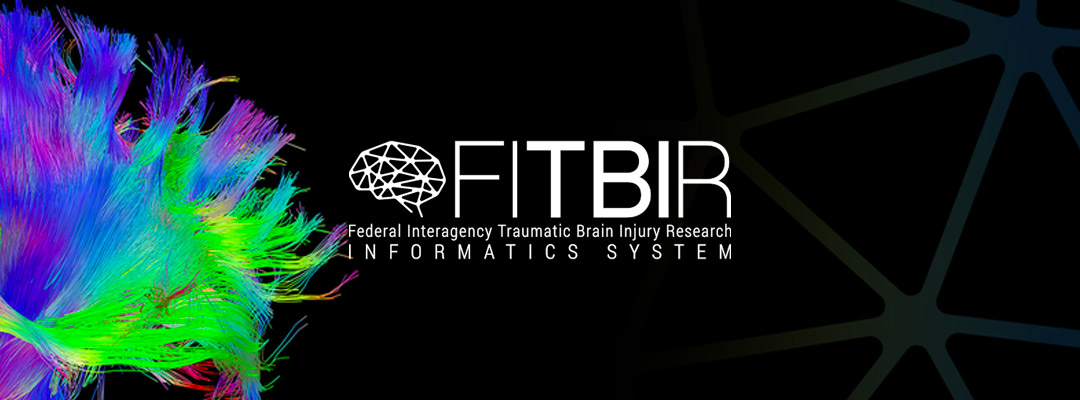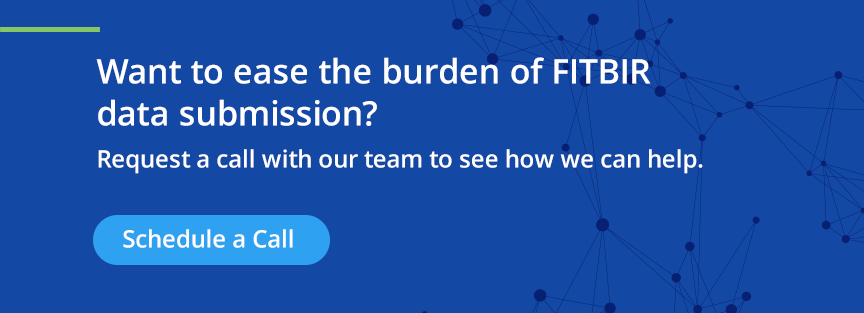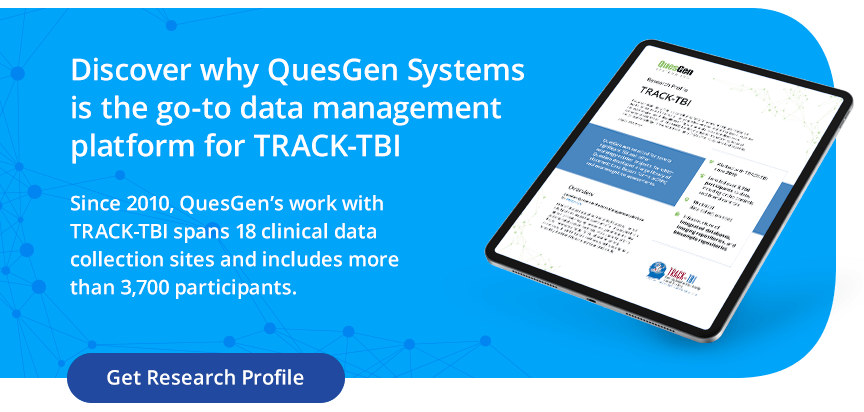Today, there’s a lot of buzz surrounding the issues caused by Traumatic Brain Injury (TBI) – and researchers, both academic and commercial, are working hard to make progress on the treatment of the disease.
However, regardless of how noble the cause, the submission of TBI research data to FITBIR can be laborious and challenging.
This is a valid obstacle to overcome, though, as TBI research data submission to FITBIR is essential for progress. Before we dive into the process, let’s first review the how and why of the program.
What is the Federal Interagency Traumatic Brain Injury Research Informatics System (FITBIR)?
Already making great strides in the advancement and support of TBI research, FITBIR stores high-quality data provided by TBI researchers in an effort to “facilitate collaboration between laboratories, as well as interconnectivity with other informatics platforms.”
The Importance of FITBIR in Brain Health Research
With so many critical gaps in our knowledge regarding how to diagnose and treat people who sustain a TBI, we need to do a better job comparing and contrasting effective treatments.
By sharing data, methodologies, and associated tools through a central informatics system—rather than summaries or interpretations of TBI trial findings—the progress of research can be greatly accelerated.
Through the open exchange of data across the entire TBI research field, FITBIR encourages collaboration between laboratories, is facilitating linkages with other informatics platforms, and has spawned new opportunities that allow for:
- Re-analysis of data
- Re-aggregation, integration, and rigorous comparison with other data, tools, and methods
Why You Need to Submit Your Data to FITBIR
Any researcher who has acquired research data related to TBI may apply for approval to submit data to FITBIR.
And if your research is NIH-funded, submitting your data to FITBIR is required.
Prerequisites aside, though, there are far-reaching benefits when the entire TBI research community unites to create an infrastructure that integrates heterogeneous datasets. With the following capabilities, FITBIR provides access to much better-quality research data than an investigator could collect independently.
- Standards to enable cross site meta-analysis and data comparisons across bioinformatics systems
- Deployment of useful bioinformatics tools for researcher use
- Promotion of the sharing of quality research data with the TBI research community
- Query access to a repository of phenotypic, genomic, imaging and pedigree research data
How Does FITBIR Work?
FITBIR uses a module system called BRICS (Biomedical Research Informatics Computing System).
In layman’s terms, BRICS is a web-based system that lets TBI investigators collaborate and access a vast collection of related research studies and clinical trials.
This combination of web-based functionality and downloadable data tools provided by BRICS supports the vision of interconnectivity and collaboration at FITBIR’s core. By supporting data definition, data contribution, and data access throughout the research life cycle, FITBIR implements the interagency Common Data Elements for TBI research.
In the end, researchers are given all the tools and resources they need to define, contribute, access, and submit data.
For a deeper dive into FITBIR and how it works, check out their extensive library of video tutorials.
Warning: FITBIR Submissions Can Be Cumbersome
As we’ve established, the FITBIR mission is noble, and they do great things for the research and advancement of TBI.
But here’s the thing: Many who have used the FITBIR system have described it as rigid and time consuming. A necessary evil in order to receive NIH funding.
Why?
Because FITBIR only accepts and works with data that has passed rigorous validation. Data that must be in a specific structure with specific common or unique data elements.
The end result is an arduous process that leaves many academic researchers and investigators frustrated. Like fitting a square peg in a round hole, the necessity to translate and convert your data into often unfamiliar formats costs time and money most researchers simply don’t have.

QuesGen Makes FITBIR NIH Data Submission Easy
More than a decade ago, QuesGen developed a tool that allows a system user or QuesGen personnel to easily map your specific database’s common and unique data elements to the FITBIR structure.
The tool takes a FITBIR form structure and allows the user to map each of their elements to the corresponding FITBIR element. Then, it automatically extracts the data into the FITBIR structure so it no longer has to be converted and translated before submitting to FITBIR—it’s already done for you!
Greatly reducing the headache that so many experience when submitting to FITBIR, QuesGen specifies and maps your data elements for a fast and seamless transfer.

In fact, QuesGen supported TRACK-TBI, one of the leading TBI research studies that included 18 level-one trauma centers and 3,000 participants across the U.S. The study was the first to populate FITBIR, making the data compatible with the International Initiative for Traumatic Brain Injury (InTBIR), a collaborative effort of the European Commission (EC), the Canadian Institutes of Health Research (CIHR) and the National Institutes of Health (NIH).
Combining market-leading technology with long-standing relationships (QuesGen has worked with key FITBIR and NIH players for many years) makes QuesGen uniquely-qualified to partner with researchers in need of FITBIR assistance.
Let us do the heavy lifting and ease your burden so you can focus on what you do best: life-changing research.



